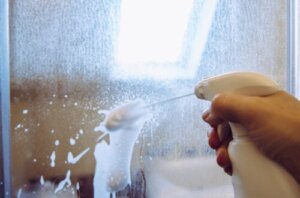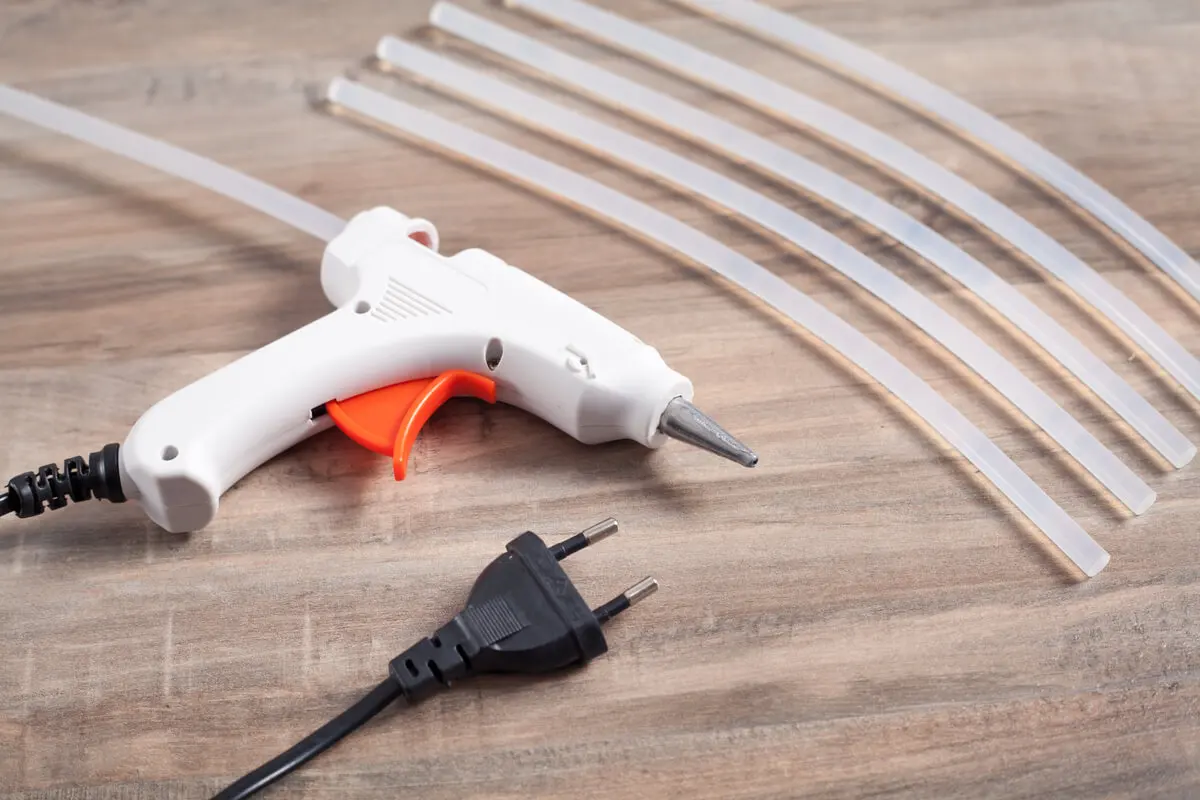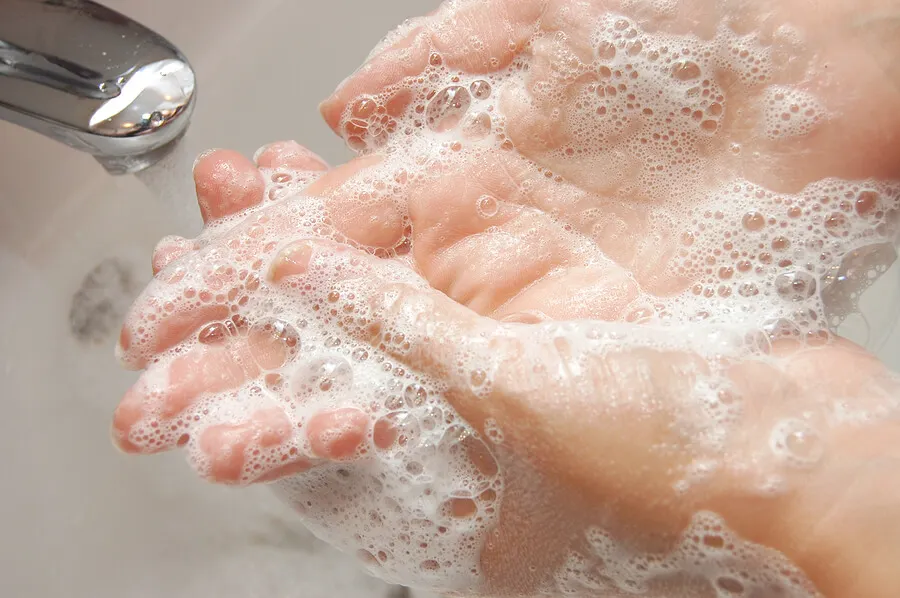How to Remove Silicone from Glass and Other Surfaces


Reviewed and approved by the doctor Leonardo Biolatto
When home repair projects are completed, traces of the materials used often remain. It’s advisable to get rid of these traces so you don’t spoil the aesthetics of your work. That’s why in this article we’re going to tell you how to remove silicone from glass and other surfaces.
Removing the leftover sealant prevents accidents, especially if there are children who could put it in their mouths; this substance contains methanol, a potent toxic for the central nervous system and the optic nerve.
Why use silicone in home repairs?
The practicality of silicone makes it one of the most popular glues to perform DIY and home repairs with. In addition, this glue stands out for its multiple functions: it seals, glues, and insulates.
The problem arises when the adhesive reaches unwanted areas, or, when due to mishandling, you end up staining surfaces such as glass, wood, fabrics, and even skin. The ideal thing is to cover the areas you’re working near, as well as using gloves.
If it’s impossible to prevent the leakage of the material, then deal with it before it dries, as it’s more difficult to remove silicone then.
Tricks to remove silicone from glass
Just as you find more than one option to remove this glue from clothes, there’s no single formula to remove silicone from glass. In fact, there are several methods. For safety, it’s best to wear gloves, masks, and goggles and ventilate the room.
Read more: How to Remove Sunscreen Stains from Clothes and Towels
1. With a blade
- Slide a blade underneath the silicone. The idea is to slice through the layers as much as you can.
- Apply a glue remover to finish loosening. Respect the waiting time indicated by the manufacturer; this is usually about 5 minutes.
- Scrape off the softened residue with a spatula.
- Clean with detergent. The results will be optimal if you dilute the soap in warm water and rub with a sponge.

2. Warm water and alcohol
Rub a damp cloth over the sealant stain, trying to soften it. After a few minutes, run a plastic card or spatula across the glass to remove the residue. Dip the cloth in warm water with alcohol so that the silicone disintegrates quickly.
3. Bleach or chlorine bleach
Try scrubbing the glue residue with bleach or sodium hypochlorite. If the silicone has adhered to the glass of a window, for example, it tends to acquire mildew. Prevent this by using this method.
4. Solvent
Apply paint thinner and wait for the rubber to peel off. You’ll speed up the process if you scrape the area with a damp cloth.
Don’t forget to use safety equipment when handling the paint thinner. It may be the simplest method, but handling the substance requires extreme care.
Read more here: Foolproof Tricks to Remove Candle Wax from Clothes, Floors and Furniture
How to remove silicone from your hands?
When you use this kind of glue without gloves, it’s very likely to stick to your hands. How to remove it?
- Rub immediately to remove as much as possible
- Massage the palms inside a plastic bag
- Spray alcohol on both hands
- Rinse with soap and water to finish

How to remove silicone from ceramic tiles?
Removing excess silicone on ceramic tiles is necessary in order to prevent the formation of mold and mildew.
Do it with a razor blade, moistening it beforehand. The putty will come off quickly if you spread a mixture of flour and water on it. Wait until it dries and the silicone residues will adhere to it. Pour water on it to remove the remaining silicone.
Risks of solvents in the cleaning of silicone
You may find these tips to get rid of silicone on glass and other surfaces a bit tedious. Turning to solvents is the shortcut, but they involve a level of toxicity that warrants precautions. The Center for Disease Control and Prevention (CDC) recommends wearing personal protective equipment if chemical use is unavoidable, including silicone.
Contact with skin can cause temporary or permanent damage. The effects can range from dry or cracked dermis to discoloration and wounds. The Institute of Chemistry of the National Autonomous University of Mexico highlights dermatitis among the common health risks linked to contact with solvents. They add that the skin becomes susceptible to infections and allergic reactions.
All cited sources were thoroughly reviewed by our team to ensure their quality, reliability, currency, and validity. The bibliography of this article was considered reliable and of academic or scientific accuracy.
- Araiza D. Procedimiento de operación para el manejo de disolventes. Instituto de Química. Universidad Nacional Autónoma de México. México; 2020. https://www.iquimica.unam.mx/images/iqseguro/006_Manejo_de_disolventes.pdf
- Blanqueador con cloro/Solución con hipoclorito de sodio. Chemical Safety Facts.org. https://www.chemicalsafetyfacts.org/es/blanqueador-con-cloro-solucion-con-hipoclorito-de-sodio/
- Efectos de las sustancias químicas al contacto con la piel: Lo que deben saber los trabajadores. Centros para el Control y Prevención de Enfermedades. Estados Unidos; 2011. https://www.cdc.gov/spanish/niosh/docs/2011-199_sp/default.html
- Escuela de Medicina. Facultad de Medicina. Pontificia Universidad Católica de Chile. CITUC alerta sobre los riesgos de la ingesta de silicona líquida en niños. https://medicina.uc.cl/noticias/cituc-alerta-sobre-los-riesgos-de-la-ingesta-de-silicona-liquida-en-ninos/
- Los mohos (hongos) en el medio ambiente. Centros para el Control y Prevención de Enfermedades. Estados Unidos; 2020. https://www.cdc.gov/mold/es/faqs.htm
This text is provided for informational purposes only and does not replace consultation with a professional. If in doubt, consult your specialist.








